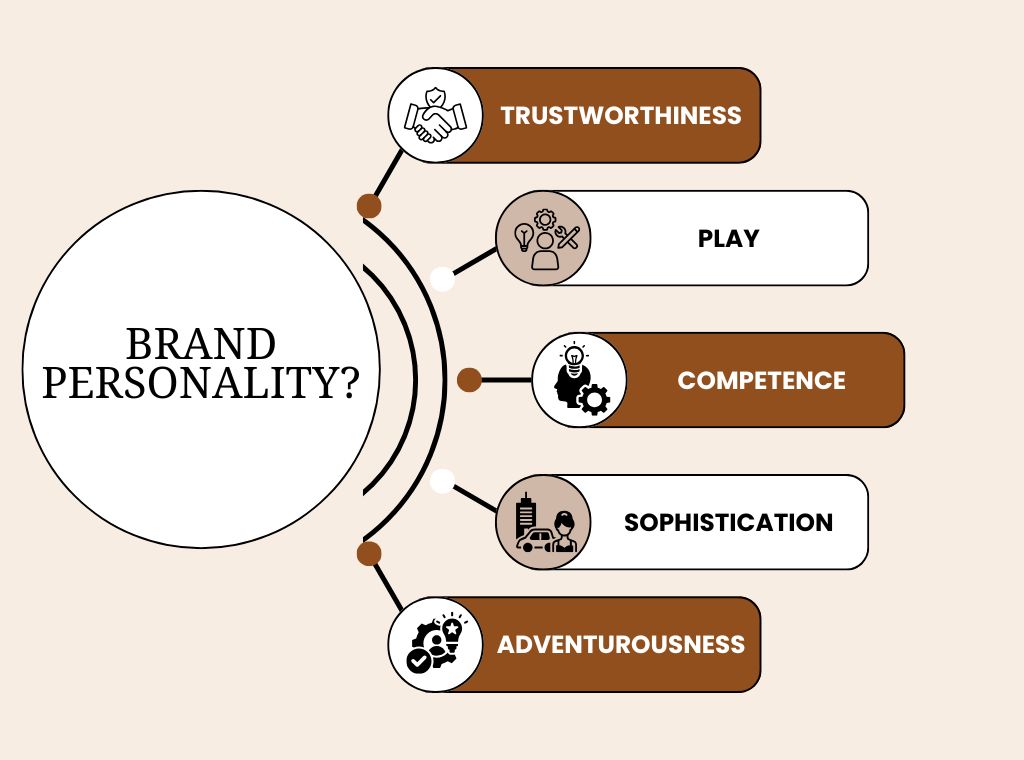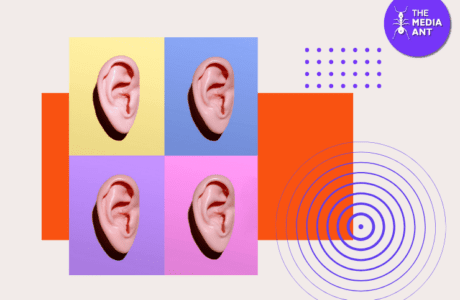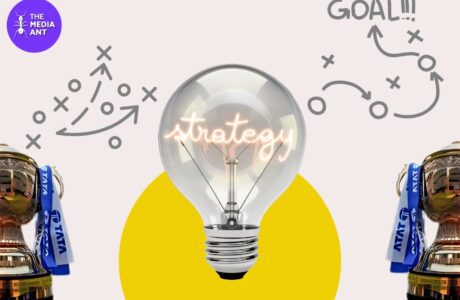Brand today is not only a product or a service but rather the entire package of certain traits, values, and characteristics which appeal to the consumer emotionally. This idea is the basis of brand personality – the process of attributing human personality traits to the brand. Brand personality assists consumers to develop an attachment towards brands founded on feelings because they are easily identifiable.
Fortunately, when developing brands and transitioning through the various stages of that journey, resources and partnerships can play a great role. For instance, The Media Ant provides targeted media services in order to help brands build and communicate their distinctive character in the multi-channel environment. From selecting appropriate media to implementing the campaigns that must embody the brand in every aspect, The Media Ant steps in to ensure these brand personalities are portrayed appropriately to the target market.
What Is Brand Personality?
Brand personality is defined as the endowment of human brand character so as to provide the consumers with a set of attributes to access. This is not only about the activity a brand engages in but about its actions, words and persona. For example, a brand that positions within the category called quality, reliability and innovation would be considered competent while a brand that adopts a jovial outlook would be viewed as exciting or playful.Brand personality development entails determination of values that reflect the brand and the way it relates to its users. They should reflect the values and preferences of the target audience thus developing a persona image. These specifications also help the notion of brand personality, since customers prefer brands that resemble their personalities.
The Aaker Model: Brand Personality Dimensions
To help companies develop consistent and relatable brand personalities, Jennifer Aaker introduced the Brand Personality Model, which outlines five core dimensions:
1. Trustworthiness – Such as; honesty, genuineness, and warm feelings. Examples: Coca-Cola, Hallmark.
2. PLAY – Interest – enjoyment, vigor, enthusiasm. Examples: Red Bull, Harley-Davidson.
3. Competence – Credible, punctual and of sound mind. Examples: IBM, Microsoft.
4. Sophistication – smart, refined classy and stylish, more related to the upper class. Examples: Chanel, Mercedes-Benz.
5. Adventurousness – Rough and muscular, roughing it. Examples: Jeep, Patagonia.These dimensions give a proper framework with which brands can create personality attributes that the public will be able to identify with in terms of their relationship and recall value.

How Does a Brand Personality Come to Life?
Brand personality is communicated through every possible brand contact point that comprises images, language styles, customers, and advertisements. Here are the main ways this happens:
- Visual Identity: Non-graphic elements include colors, fonts/typography, logos and other image factors because they influence the first impressions. Using typography hierarchy, a luxury car brand might adopt coloured fonts of different shades of green and black and use simple shapes while a fun brand might adopt brighter colors of the rainbow and use exotic complex shapes.
- Tone of Voice: Almost as important as what is said is how a brand speaks to its audience. A fresh and active customer segment will incline to informal language, whereas a law firm or accounting services will better choose formal one.
- Customer Interaction: Customer relationships are also a manifestation of a brand’s personality. Some of the brands such as Starbucks play the warmth card and employ friendly personnel while also maintaining pleasant surroundings.
- Content and Messaging: Brand personality is influenced by the content selection and the messages that is to be conveyed. Storytelling that focus on the engagement with the community will help build a perception of authenticity, while the angles that showcase innovation will put the brand on the pedestal of competency.
Importance of Defining Your Own Brand Personality
Defining a clear brand personality is crucial for several reasons:
- Emotional Connection : Brand personality creates a basis for emotional connections. Consumers are drawn to brands they perceive as relatable and aligned with their values.
- Brand Loyalty and Differentiation: A unique brand personality helps differentiate a brand in a crowded marketplace. This personality also builds customer loyalty, as consumers are more likely to stay loyal to brands they feel emotionally connected to.
- Consistency Across Channels: Defining a brand personality provides a foundation for consistent messaging. Brands with a clear personality can maintain consistency across all marketing channels, reinforcing their image in the minds of consumers.
- Guides Brand Decisions: A defined personality also guides brand decisions, from product design to marketing campaigns, ensuring that all choices align with the brand’s identity.
How to Define Your Brand Personality?
Developing a brand personality involves several steps:
- Understand Your Audience: Begin by researching your target audience’s preferences, values, and demographics. This information helps shape a personality that will appeal to the audience.
- Identify Core Values: Determine the core values that align with your brand mission and vision. These values form the foundation of your personality traits.
- Analyze Competitors: Studying competitors helps identify gaps in the market where your brand personality can stand out.
- Use the Aaker Model as a Guide: The Aaker Model’s five dimensions can serve as a framework, helping you choose personality traits that align with your brand’s goals.
- Testing and Feedback: Experiment with brand messaging and gather feedback to refine and validate the personality traits you’ve chosen.
Examples of Brand Personality
- Apple :Known for sophistication and innovation, Apple’s brand personality appeals to consumers who value creativity and premium design.
- Nike: Known for excitement and empowerment, Nike’s personality aligns with athletes and those who embrace an active lifestyle.
- Coca-Cola: Coca-Cola is associated with sincerity and friendliness, promoting a sense of togetherness and happiness.
- Tesla: Tesla’s brand personality centers on innovation and eco-consciousness, attracting environmentally aware and forward-thinking consumers.
- Starbucks: Starbucks exudes a warm, community-oriented personality, creating spaces where people can connect.
The Media Ant: Bringing Brand Personality to Life
Once a brand’s personality is established, the challenge lies in effectively communicating it across various touchpoints. This is where The Media Ant steps in, offering tailored media and advertising solutions that ensure consistency and resonance. By strategically selecting platforms and customizing messaging, The Media Ant allows brands to showcase their personality to the right audience, making a meaningful impact. From digital channels to traditional media, The Media Ant helps brands sustain their personality, creating connections that last.
Conclusion
Creating and maintaining a strong brand personality is fundamental to building lasting connections with consumers. A well-defined personality allows brands to stand out, create emotional bonds, and foster brand loyalty. For brands aiming to communicate their personality effectively, The Media Ant offers strategic media solutions to bring brand identity to life. By partnering with The Media Ant, brands can ensure their personality shines consistently across all channels, resonating with audiences and establishing a distinct presence in the market.
FAQs on Brand Personality
What are the 4 types of brand personality?
The primary types are Competence, Sincerity, Excitement, and Sophistication, though some models may categorize slightly differently.
What are the 5 main brand personalities?
According to Aaker’s Model, the five dimensions are Sincerity, Excitement, Competence, Sophistication, and Ruggedness.
What is the brand personality of Coca-Cola?
Coca-Cola is known for its sincere and friendly brand personality, which emphasizes happiness and togetherness.
What is Starbucks’ brand personality?
Starbucks projects warmth, sophistication, and community focus, aligning with its role as a social gathering space.
Can I change my brand’s personality over time?
Yes, brands can evolve their personality, especially to stay relevant with changing consumer preferences. However, this should be done gradually to avoid confusing consumers.
Is it necessary for every business to have a defined brand personality?
Having a defined brand personality isn’t essential for every business, but it significantly enhances connection and loyalty, particularly for consumer-facing brands.
How long does it take to develop a strong brand personality?
Building a brand personality is an ongoing process. However, with consistent messaging and strategic planning, a distinct brand personality can start forming within months.





